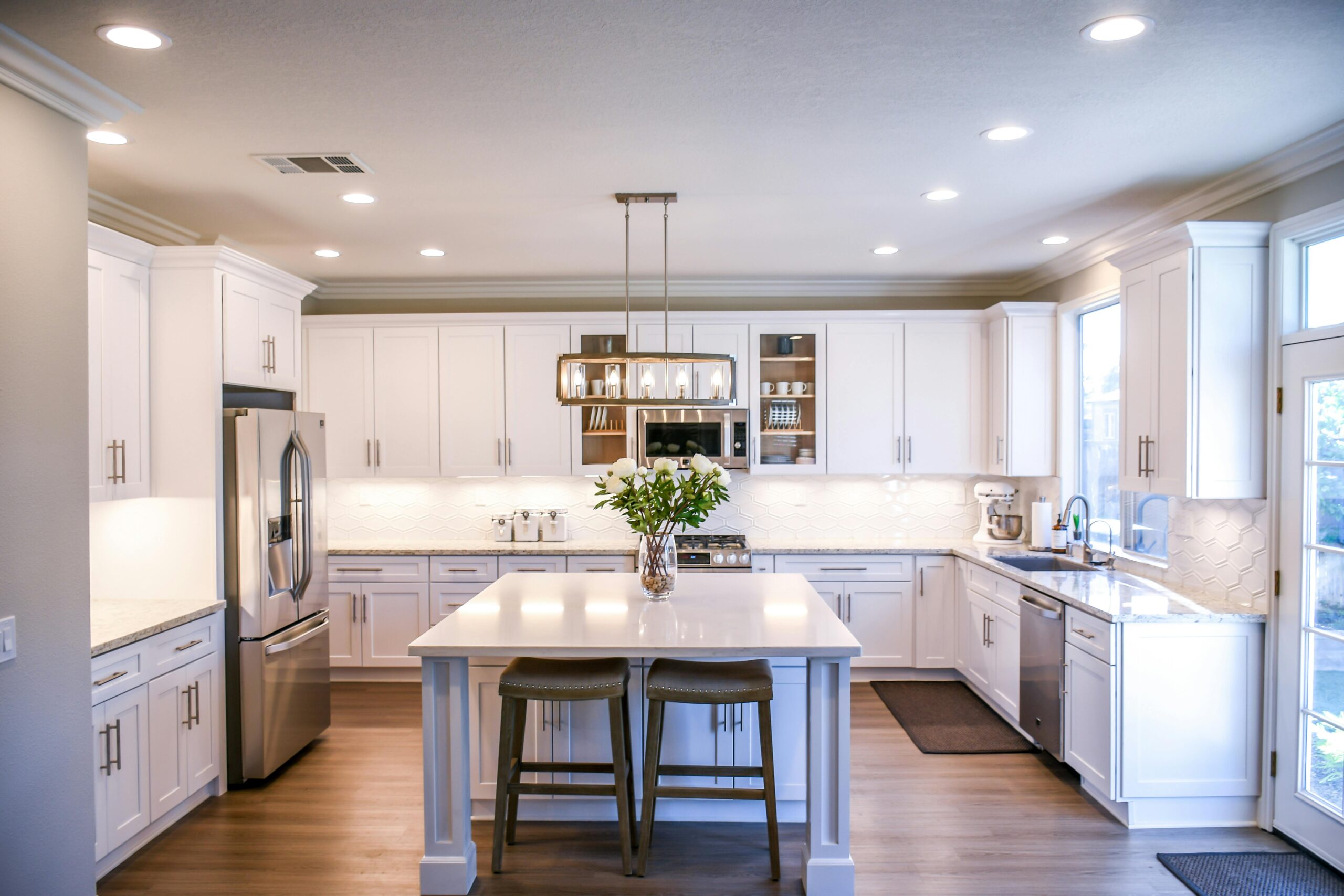Selecting the right kitchen cabinets can transform your cooking space while providing essential storage and setting the tone for your entire home. With numerous options available, the process of choosing kitchen cabinets requires understanding different cabinet types, materials, styles, and budget considerations. This comprehensive guide explores stock, semi-custom, and custom cabinet options, compares various materials from solid wood to laminate, examines popular door styles, and provides realistic price ranges to help you make an informed decision for your kitchen renovation.
Understanding Cabinet Types
When beginning your kitchen cabinet journey, it’s important to understand the three main cabinet types: stock, semi-custom, and custom. Stock cabinets are pre-manufactured in standard sizes and designs, making them the most affordable and readily available option. These cabinets typically come in limited finishes and styles but offer quick delivery times, usually within a few weeks. For homeowners with standard kitchen layouts and straightforward design preferences, stock cabinets provide excellent value.
Semi-custom cabinets bridge the gap between stock and custom options. While based on manufacturers’ standard sizes, these cabinets allow for some modifications in dimensions, finishes, and details. This flexibility makes semi-custom cabinets popular among homeowners who want personalized touches without the premium price of fully custom work. The lead time for semi-custom cabinets typically ranges from 4-8 weeks, and they offer a wider range of wood species, finishes, and storage solutions than stock options.
For ultimate personalization, custom cabinets are built specifically for your kitchen by skilled craftspeople. These cabinets accommodate any size requirements, unique configurations, or special design elements. While custom cabinets represent the highest cabinet cost in the kitchen cabinet comparison, they provide unmatched quality and one-of-a-kind results. Lead times can extend to 12 weeks or more, but the result is cabinetry perfectly tailored to your space and preferences.
Cabinet Materials Comparison
The material you select for your cabinets significantly impacts durability, appearance, and price. Solid wood remains a perennial favorite, offering natural beauty, durability, and the ability to be refinished. Common wood species include oak, maple, cherry, and walnut, each with distinct grain patterns and color characteristics. Wood cabinets adapt well to various design styles, from traditional to contemporary, though they may expand and contract with humidity changes.
Medium-density fiberboard (MDF) has gained popularity as a stable, cost-effective alternative to solid wood. This engineered material consists of wood fibers bonded with resin under heat and pressure. MDF doesn’t warp or crack like natural wood might, and it provides an excellent smooth surface for painting. When choosing kitchen cabinets with painted finishes, many professionals recommend MDF doors for their superior paint adherence and resistance to showing seams over time.
Laminate cabinets feature a printed layer adhered to a substrate, typically particleboard. Modern laminates offer impressive durability and a vast array of colors and patterns, including realistic wood grain simulations. These cabinets resist moisture and staining better than wood and require minimal maintenance. For budget-conscious renovations or contemporary designs, laminate represents an attractive option in any cabinet materials comparison.
Popular Door Styles
The door style of your cabinets creates the most visual impact in your kitchen design. Shaker-style doors, featuring a five-piece construction with a recessed center panel, remain the most popular choice for their versatility and timeless appeal. This clean, straightforward design works in virtually any kitchen aesthetic, from farmhouse to modern.
Flat-panel (slab) doors offer a sleek, minimalist look ideal for contemporary and mid-century modern kitchens. Their smooth, unadorned surface creates a clean appearance and is typically less expensive than more intricate styles. For modern kitchens, high-gloss or matte finishes on flat doors create striking visual impact.
For traditional or formal kitchens, raised-panel doors with decorative details provide classic elegance. These doors feature a center panel raised above the surrounding frame, often with elaborate edge profiles or additional molding. While beautiful, the detailed construction typically raises the kitchen cabinet cost compared to simpler styles.
Kitchen Cabinet Cost Guide
Budget planning requires understanding typical price ranges for different cabinet types. Stock cabinets generally range from $100-300 per linear foot installed, making them the most economical choice. These pre-manufactured units offer good value for straightforward kitchen designs, though customization options remain limited.
Semi-custom cabinets typically cost between $200-650 per linear foot installed, reflecting their increased quality and customization options. This middle-range option provides an excellent balance of personalization and value for many homeowners, according to design experts at AskHomey who regularly consult on kitchen renovations.
Custom cabinets start around $500 per linear foot installed and can exceed $1,500 depending on materials, craftsmanship, and complexity. While representing the highest investment, custom cabinetry offers unparalleled quality and perfect fit for your space. When evaluating kitchen cabinet types, remember that hardware, special features like soft-close mechanisms, and interior accessories will add to the base cabinet cost.
Making Your Final Decision
Choosing kitchen cabinets ultimately requires balancing aesthetics, functionality, durability, and budget. Consider how you use your kitchen daily, your maintenance preferences, and how long you plan to remain in your home. Request samples of materials and finishes to see how they look in your actual kitchen lighting, as colors and textures can appear different in showrooms.
Remember that cabinets typically represent about 30% of a kitchen renovation budget, making this decision particularly significant. Take time to research options thoroughly, visit multiple showrooms, and perhaps consult with a kitchen designer who can provide expert guidance on cabinet selection.
For more tips and to connect with reliable home service professionals, follow AskHomey on Facebook and Instagram.



